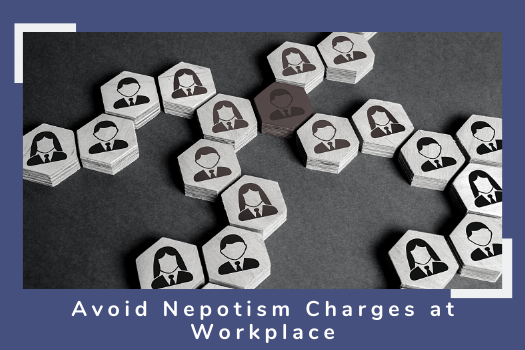Eliminating Waste From Talent Acquisition Process
Employee Engagement, Employee Relations, Rewards and Recognition
At its core, Lean is about the identification and elimination of waste through a structured approach to problem-solving. It focuses on reducing the complexity of each process and identifying areas for improvement.
Lean HR = SMART HR
It’s all about AGILITY
Over the last few years, all organizations have been under pressure to improve performance. With the change in the economy and the time it has taken to start to recover, the need to reduce cost while maintaining or improving production has become nearly universal. This is especially true in staff functions like HR.
Most of the expense of running a business, other than manufacturing, is in salary and benefits of employees. When you are a cost center like HR, with no reasonable expectation of producing revenue, there is not much that can be done to improve an organization’s bottom line other than lowering costs. It is very difficult to generate savings, and the siren’s call of employee cost is one that can be difficult to resist. But resist you must if you are to build a viable program of continuous improvement.
While the alternative is through “process improvement”, unfortunately, “process improvement” has become synonymous with “headcount reduction” which leads to an immediate negative reaction to any changes proposed, besides facing difficulty in recruiting team members and acquiring data.
In most instances this means…..but is actually not –
From the very beginning, it will be important to shield eyes from headcount when looking at cost savings. Not only is it dangerous in the long term as those savings are rarely realized as expected. Hence, our option then is to find ways of –
This is possible only when the concerned authorities occupying the so-called ‘senior tags’ in the organization come together and say – “Let’s Encourage Agile Nature”.
Having said that, I am also happy to share that there are organizations that are inclined to get this into action. Today I am going to share one such “Parul’s Lean Love Story” of an organization that is currently associated with.
The Premise – “Parul’s LEAN Love Story”
On a business working day, I was driving my way to meet Mrs. Parul Mehta, Director – HR (India) of US MNC. Her husband happens to be a friend of mine. During one of the telecon with her, I have promised her that I will save 25% of her resources [time, people and money] by applying Lean and Six Sigma methodologies in HR processes.
However, she claims that HR processes in her organization are very vibrant and optimized. As such, there is no scope for any further improvements. However, as a friend of her husband, she agreed to give me an appointment & gave me a slot of 30 minutes to explain my proposal.
Finally, the day of appointment happened & I very much understand that it is a make or break situation for me.
The Set-up
I reached Parul’s office in 15 minutes before the scheduled time. Naturally, she made me wait for another 15 minutes. I was asked to wait in the conference room. And while I was waiting, I was served a coffee. I took a sip and Mrs. Parul Mehta walked into the conference room.
Her body language was so loud that I didn’t hear “Good afternoon” that she whispered. Clearly, she was not interested in this meeting and was seeing me ONLY because of her husband.
We can’t attribute the attitude to her personality as “Lean HR is not very popular in India and those who are working in HR Function have that natural tendency of hesitation towards bringing a change that they have hardly witnessed in the land. Moreover, over a period of time, Human Beings naturally fall in love with the procedures and process that they have been following for long”.
The Interaction
As she entered, she was immediately into the agenda for the discussion and quickly inquired into what is the value that I can add with my proposal.
Given the background, the belief that she carries on the concept and the fact that I have very little scope to pitch in to win, I did not get her on to a trip of making her understand the concept of Lean, types of wastes, continuous improvements etc. as it was already done through emails & over the phone earlier.
In the light of the above, I focused my talk on “Understanding the General Recruitment Process” followed in her organization” which she explained as follows:
- Get request from the hiring manager.
- Reconfirm and finalize job description.
- Release Internal Job Posting on Company Intranet at the same time asks employees to refer their friends and acquaintances for the role.
- Work on other channels of sourcing – job portals, job boards, recruitment consultants, and social media.
- Receive resumes. After the basic screening, send resumes to the hiring manager for shortlisting
- Coordinate interviews based on the availability of hiring manager. Some roles require more than two rounds of interviews
- Negotiate for salary and date of joining
- Make an offer and keep follow-up with candidate till the date of joining
As the discussion progressed, I slowly started getting into the details and got to understand the following:
- The average time of Request Generation to that of onboarding is around 60 – 75 days (close to 30 – 45 days to make an offer). Some positions take much more time.
- Shortlisting and interviewing eats away the maximum time because:
• For a technical shortlisting and interviewing, they are dependent on hiring managers and they take their own sweet time.
• Candidates are not available as per time is given by hiring managers and hiring managers are not available as per time suggested by candidates.
• This hide-and-seek continues till the position become very critical and filling of that role become a do-or-die situation for a hiring manager - Getting relevant profiles is also a time-consuming process
- Requisition from Hiring Manager contains:
• Job title, new hire or replacement hire, level of experience,
• Expected joining date (which is usually “urgent”), and
• Approvals from the hiring manager as well as the reporting manager of the hiring manager”. - A job description consists of:
• List of job activities,
• Skills and competencies required,
• Educational background
• Experience level &
• Approximate salary budget
And then I could see a bit of “frustration” on her face as each of the above (especially 2 & 3 appeared to be challenging for them).
The Pain Points
At the end of it…
From the above, I have understood, there is a lot of waste in their recruitment process which is eating their time, resources, and opportunity cost. And I was certain of helping them reduce the recruitment cycle time by at least 15 days by doing the following:
The curious PARUL – “Real Time Data…what is it & how do you do that?”
To build on the opportunity that I had (her curiosity created this opportunity for us) and in order to give her the confidence that I can do this for her, shared few of the probabilities that we worked upon with our previous clients that were arrived after a series of discussions, debates, expectations, brainstorming, time & motion study of each stage/step in the recruitment process.
- Receiving Manpower Requisition Form along with job description, the name of stakeholders and interview panel.
- Create a scope of relocation. It will help in getting best talent from the market and will keep the organization & Team HR to be abreast with the competitors.
- Eliminate the need of candidate having studied in tier-1 institutes as well as a percentage they might have obtained in their schools and college. It will not affect the brand but it will certainly increase the talent pool to select from.
- Best days to schedule job interviews are Friday’s and Saturday’s or early in the morning or late in the evening.
- Involve all stakeholders in the interview process. Take panel interviews, if possible or else schedule all rounds of interviews on the same day.
- Be part of shortlisting and interviewing process to understand the expectations of the internal stakeholders. One must know why some candidates have been rejected so that appropriate care can be taken in future screening the profiles. It will help in improvising the recruitment process as well as eliminate wastage of time.
- Managing the “Pool of Pipeline”. Make an offer to one & keep at least two equally good candidates in pipeline duly deciding on the time/durability of the pipeline so that it helps the Team HR as well the organization at large to save themselves from falling on the trap of “No Show…start it all over again”
It is Time for Elevator Pitching
Having quoted the above areas, I further showcased some of the work that I have done with my other clients in helping them make lean recruitment processes.
And as we closed our meeting, she asked me to provide her with TWO references from my clients for her to take feedback on my work, which I readily agreed & gave her the details.
This made me sensing that Mrs. Parul Mehta was looking convinced with my work & methodology. Hence, felt that it was the right time to put the ball in her court and said: “If you decide to engage us, we can work on more results.”
And there was a beginning…
Three weeks after our first meeting, she called me up to schedule another meeting, so that we can discuss commercials and payment terms. Currently, I am working with her on FIVE projects. She has also recommended our name to some of her HR friends in Industry.






